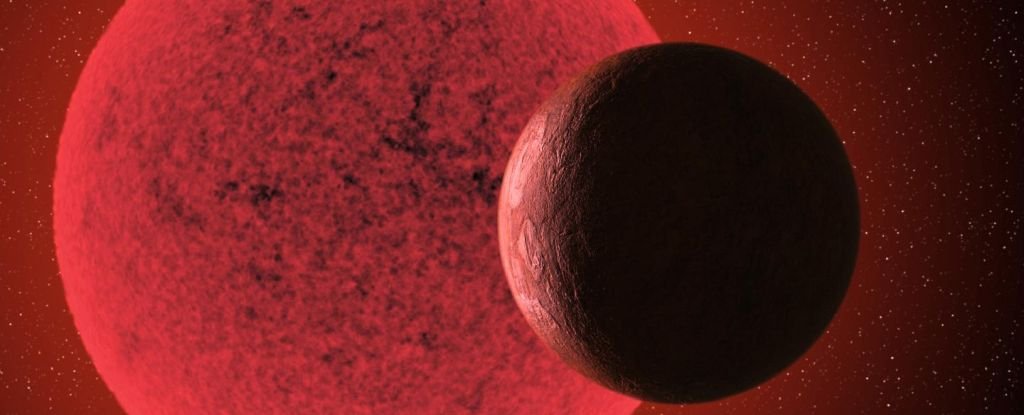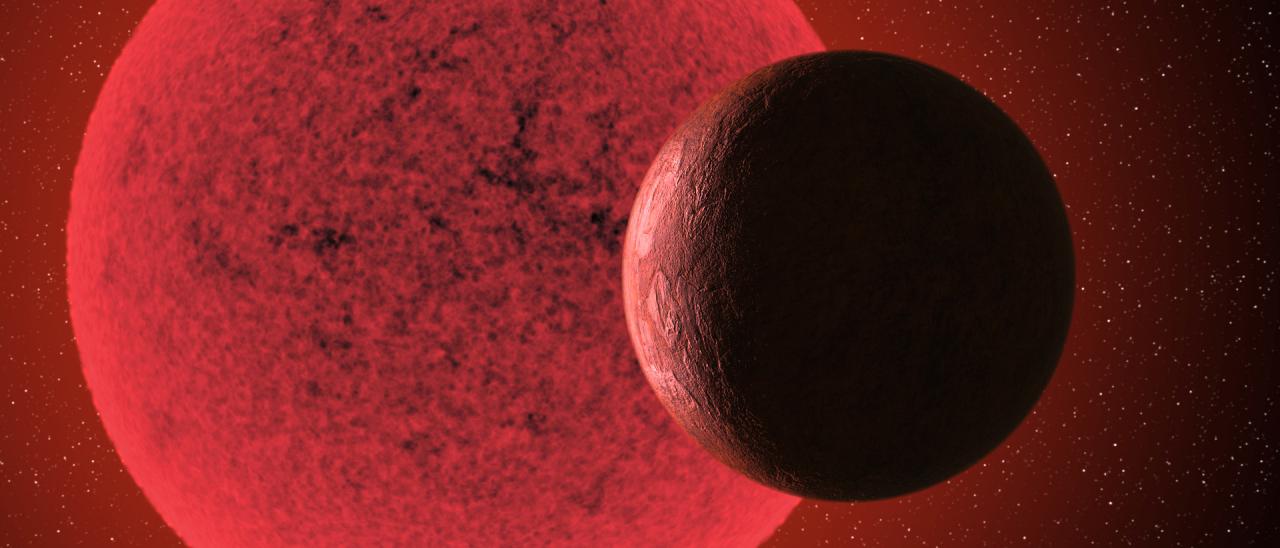Welcome to DU!
The truly grassroots left-of-center political community where regular people, not algorithms, drive the discussions and set the standards.
Join the community:
Create a free account
Support DU (and get rid of ads!):
Become a Star Member
Latest Breaking News
General Discussion
The DU Lounge
All Forums
Issue Forums
Culture Forums
Alliance Forums
Region Forums
Support Forums
Help & Search
Science
Related: About this forumAstronomers Have Found a Super-Earth Near The Habitable Zone of Its Star

Artistic impression of the super-Earth in orbit round the red dwarf star GJ-740. Credit: Gabriel Pérez Díaz, SMM (IAC).
MICHELLE STARR 27 MAY 2022
The very tiny motion of a small star has revealed the presence of a super-Earth exoplanet, orbiting at a distance that is close to habitable.
Around a faint red dwarf called Ross 508, located just 36.5 light-years away (yet too dim to be seen with the naked eye), astronomers have confirmed the existence of a world just 4 times the mass of Earth. Given what we know about planetary mass limits, that means the world is likely to be terrestrial, or rocky, rather than gaseous.
The exoplanet, named Ross 508 b, is unlikely to be habitable for life as we know it; however, the discovery, a first for a new survey using the National Astronomical Observatory of Japan's (NAOJ) Subaru Telescope in Hawaii, demonstrates the efficacy of the techniques used to locate small planets around dim stars.
The hunt for habitable exoplanets is stymied somewhat by the very nature of what we believe those exoplanets to be like. The only template we have is Earth: a relatively small planet, orbiting at a distance from its star where temperatures are conducive to liquid water on the surface. This is what's known as the 'habitable zone'.
Those aren't the only factors at play, obviously – Mars falls inside the Sun's habitable zone, for instance – but they're the easiest ones to screen for.
More:
https://www.sciencealert.com/a-super-earth-has-been-found-near-the-habitable-zone-of-a-star-in-the-solar-neighborhood
~ ~ ~
A new super-Earth detected orbiting a red dwarf star

Artistic impression of the super-Earth in orbit round the red dwarf star GJ-740. Credit: Gabriel Pérez Díaz, SMM (IAC).
In recent years there has been an exhaustive study of red dwarf stars to find exoplanets in orbit around them. These stars have effective surface temperatures between 2400 and 3700 K (over 2000 degrees cooler than the Sun), and masses between 0.08 and 0.45 solar masses. In this context, a team of researchers led by Borja Toledo Padrón, a Severo Ochoa-La Caixa doctoral student at the Instituto de Astrofísica de Canarias (IAC), specializing in the search for planets around this type of stars, has discovered a super-Earth orbiting the star GJ 740, a red dwarf star situated some 36 light years from the Earth.
The planet orbits its star with a period of 2.4 days and its mass is around 3 times the mass of the Earth. Because the star is so close to the Sun, and the planet so close to the star, this new super-Earth could be the object of future researches with very large diameter telescopes towards the end of this decade. The results of the study were recently published in the journal Astronomy & Astrophysics.
“This is the planet with the second shortest orbital period around this type of star. The mass and the period suggest a rocky planet, with a radius of around 1.4 Earth radii, which could be confirmed in future observations with the TESS satellite”, explains Borja Toledo Padrón, the first author of the article. The data also indicate the presence of a second planet with an orbital period of 9 years, and a mass comparable to that of Saturn (close to 100 Earth masses), although its radial velocity signal could be due to the magnetic cycle of the star (similar to that of the Sun), so that more data are needed to confirm that the signal is really due to a planet.
The Kepler mission, recognised at one of the most successful in detecting exoplanets using the transit method (which is the search for small variations in the brightness of a star caused by the transit between it and ourselves of planets orbiting around it), has discovered a total of 156 new planets around cool stars. From its data it has been estimated that this type of stars harbours an average of 2.5 planets with orbital periods of less than 200 days. “The search for new exoplanets around cool stars is driven by the smaller difference between the planet’s mass and the star’s mass compared with stars in warmer spectral classes (which facilitates the detection of the planets’ signals), as well as the large number of this type of stars in our Galaxy”, comments Borja Toledo Padrón.
More:
https://www.iac.es/en/outreach/news/new-super-earth-detected-orbiting-red-dwarf-star
InfoView thread info, including edit history
TrashPut this thread in your Trash Can (My DU » Trash Can)
BookmarkAdd this thread to your Bookmarks (My DU » Bookmarks)
2 replies, 1436 views
ShareGet links to this post and/or share on social media
AlertAlert this post for a rule violation
PowersThere are no powers you can use on this post
EditCannot edit other people's posts
ReplyReply to this post
EditCannot edit other people's posts
Rec (15)
ReplyReply to this post
2 replies
 = new reply since forum marked as read
Highlight:
NoneDon't highlight anything
5 newestHighlight 5 most recent replies
= new reply since forum marked as read
Highlight:
NoneDon't highlight anything
5 newestHighlight 5 most recent replies
Astronomers Have Found a Super-Earth Near The Habitable Zone of Its Star (Original Post)
Judi Lynn
May 2022
OP
Perhaps I am mistaken but I thought that the most recent science regarding red dwarfs
cstanleytech
May 2022
#1
cstanleytech
(26,293 posts)1. Perhaps I am mistaken but I thought that the most recent science regarding red dwarfs
is leaning to them not having a habitable zone?
Response to Judi Lynn (Original post)
Name removed Message auto-removed